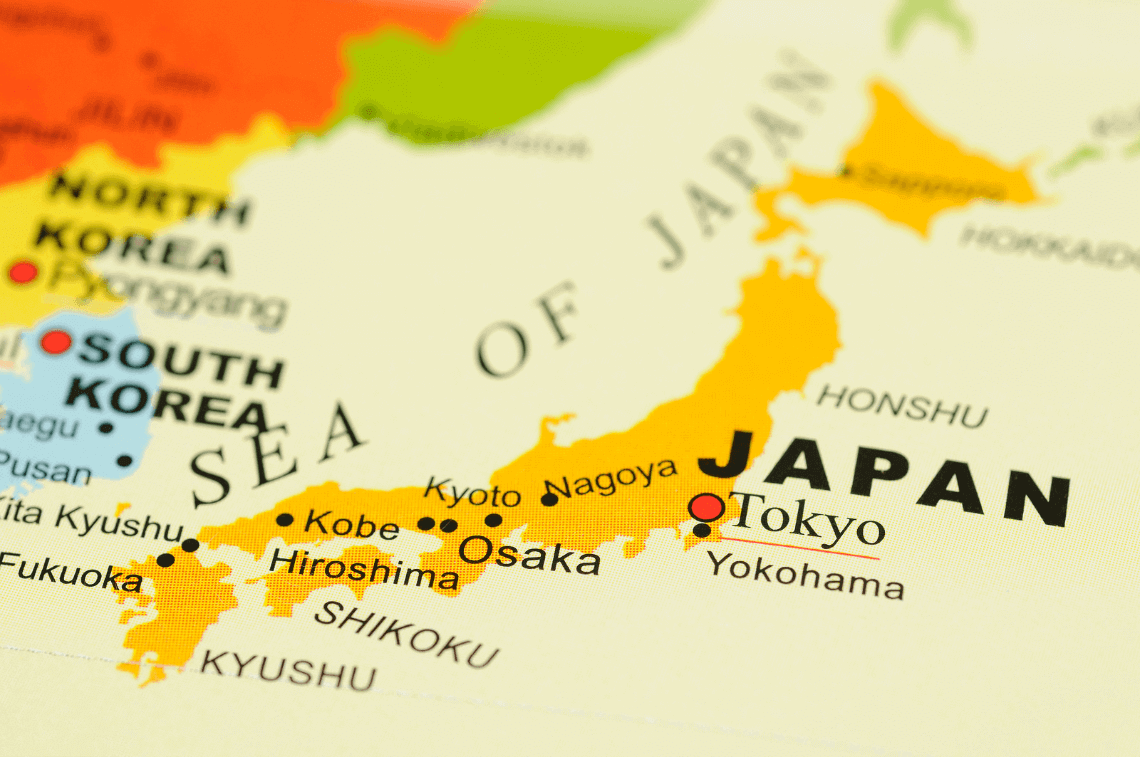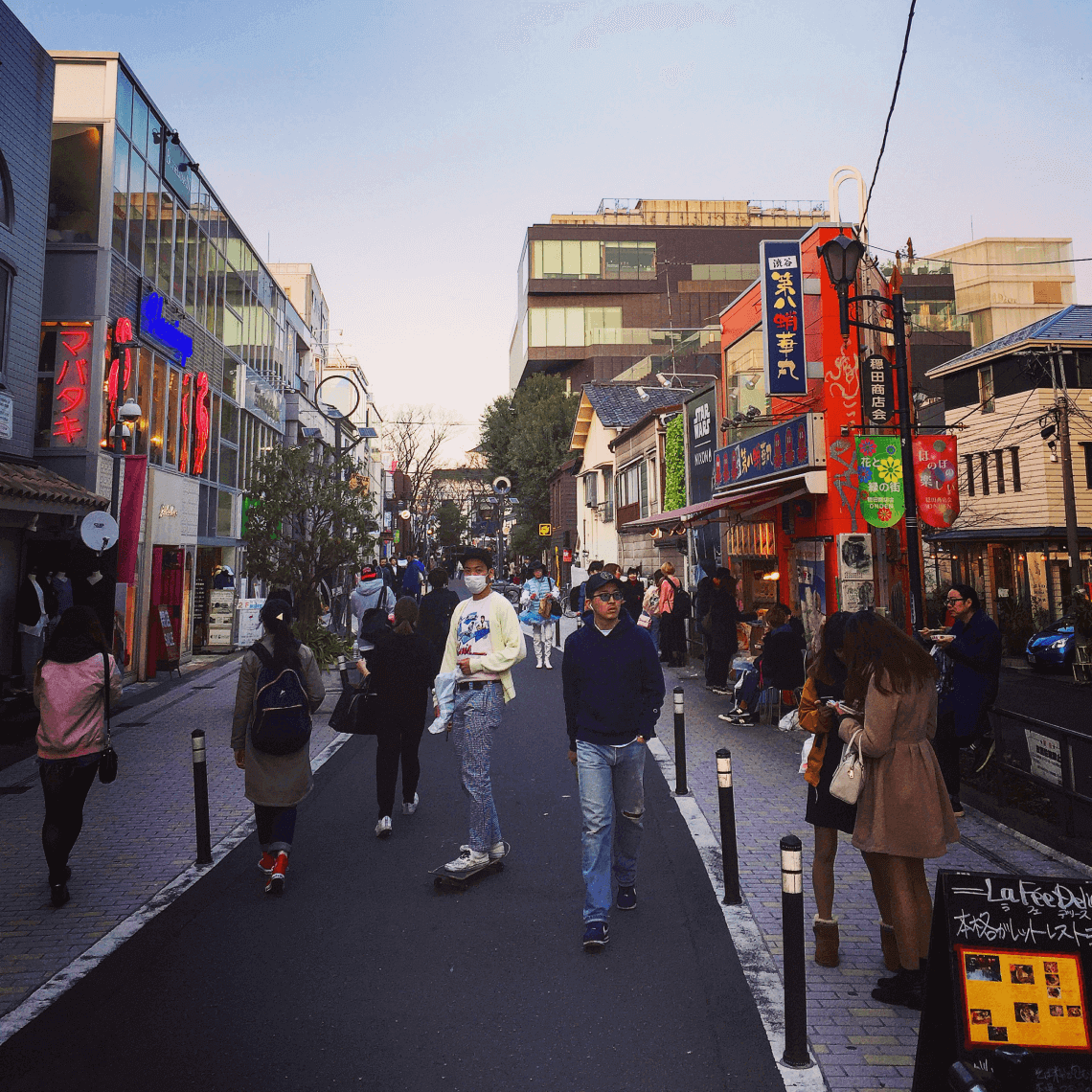As you prepare for your trip, you’ve finally turned your attention to your Japan packing list.
Fortunately, preparing for Japan can be surprisingly easy, but before you travel make sure to keep these essential packing tips in mind! Some of these suggestions are obvious, but others may surprise even experienced travelers.
We’ve also included some of our favorite travel gear, in the hopes that it will make packing a bit more fun and easier for you. After all, packing can be one of the most enjoyable — or dreaded! — aspects of preparing for a big trip.
Here is your 8-step Japan travel checklist:
- Bring shoes that are easy to slip on and off
- Pack as lightly as possible
- Use takuhaibin, Japan’s luggage-forwarding service
- Bring formal and casual clothes
- Get Japanese yen: you’ll need it!
- Handle visas, passports, and travel insurance
- Don’t forget essential extras: pocket Wi-Fi, hand sanitizer, and more
- Leave room in your luggage to shop in Japan

1. Bring shoes that are easy to slip on and off
No, you don’t need to wear geta.
But unless you enjoy untying and lacing your shoes every few minutes, the best shoes for Japan are ones you can slip on and off easily.
Many places in Japan – including ryokans (traditional inns), temples, and some izakayas and restaurants – require you to remove your shoes.
As a rule of thumb, if you see tatami mats, you’ll need to take off your shoes. In these cases, it’s also considered somewhat impolite to be barefoot, so if needed bring a pair of socks with you.
Read more about Japanese etiquette tips and taboos.
Speaking of socks, make sure yours are hole-free! If needed, stock up on high-quality socks at one of Japan’s ubiquitous sock shops.
Depending on your itinerary, it’s usually also wise to bring comfortable walking shoes. Tokyo is a surprisingly walkable city, and for places like Kyoto there’s often no better way to explore than on foot.

2. Pack as lightly as possible
Packing lightly is a useful skill for travel to any country, but in the case of Japan it is especially worth noting. Navigating Japan is much easier when you have a small, easily portable bag or suitcase.
Most travelers in Japan rely heavily on Japan’s comprehensive and easy-to-use railway networks, but unfortunately Japanese trains and train stations do not cater especially well to travelers with a lot of luggage.
How do we define “a lot of luggage”? Anything more than a small rolling suitcase (airplane carry-on size) and a backpack or duffel.
Japanese train stations are often quite crowded, and to make matters worse they often don’t have as many elevators or escalators as you might wish. This is true in major cities, and even more so in rural areas.
The shinkansen (bullet train) typically has a small dedicated area for suitcases, but this space must be reserved in advance of travel. On the other hand, the shinkansen’s overhead space is just right for small carry-on sized suitcases.
As for other (non-shinkansen) trains in Japan: while some do have some space overhead for small bags, many have none at all.
For all of these reasons, we recommend traveling either with a small rolling suitcase or backpack, if at all possible.
Not willing or able to pack light?
You’re in luck!
Japan has a wonderful luggage-forwarding service that will make traveling through Japan a breeze, even with loads of luggage.
Read more about luggage forwarding below.

3. Use takuhaibin, Japan’s incredible luggage-forwarding service
We know not everyone can or wants to pack light.
Fortunately for heavy packers, Japan’s incredible luggage-forwarding system (known as takuhaibin, or takkyubin), means you don’t have to.
“Hands-free travel” is a fast, reasonable, and very reliable service that allows you to easily and efficiently send suitcases from hotel to hotel, or even to the airport.
While in some instances same-day forwarding is possible for a premium, delivery between most destinations within Japan takes one or two nights.
This means spending a night or two without your main luggage. In cases like this, we usually recommend “skipping” a destination, and traveling for a day or two with just a small overnight duffel or backpack.
Even though some travelers are hesitant to part with their main suitcase, it can certainly be worthwhile — especially when traveling to remote locations.
Not only can traveling in rural Japan be a hassle with a large suitcase (see the section above!), it can also be very freeing to travel lightly while exploring Japan’s countryside.
For example, if you’re going to a ryokan in the countryside, you won’t need much anyway, since you’ll probably spend most of your time in yukata (Japanese-style robes)!
If you’re traveling with another person, consider sharing the delivery service with a traveling partner. This way you can keep one “shared” suitcase (that you forward from hotel to hotel), and a smaller bag to easily carry with you from destination to destination.

How to use Japan’s luggage forwarding
Taking advantage of luggage forwarding is easy! The front desk at most hotels and ryokans can make the arrangements for you — just make sure to let them know a day or more in advance. Giving them proper notice ensures they can make the arrangements for you in good time.
The price depends on factors such as luggage size (dimensions and weight) and destination, but you can typically expect to pay around US $15-$30 per suitcase. If your bag exceeds weight limits, you may need to separate your items into multiple bags.
If you’re staying in budget accommodations (or in a private home, for example), you’ll need to make the arrangements yourself.
One option is to do so at a conbini (convenience store). Or, refer to the informative websites of Yamato Transport or Luggage-Free Travel, which both specialize in luggage-forwarding services.
While luggage forwarding is a fantastic service – and very reliable, as most Japanese services are – please make sure to use it at your own risk.
THINKING OF BECOMING A LIGHT PACKER?
Here are a couple of our favorite bags for traveling around Japan:
- Personally, I like Minaal bags. I have this one from 2016, and have used it for long trips to Japan and elsewhere successfully. Check out their travel gear.
- Another solid option is the Samsonite Freeform Hardside Spinner 21. You can buy it on Amazon here.
- A classic, some travelers swear by the Tom Bihn Aeronaut 45. See all their bags here.

4. Style & fashion: what to wear
You don’t need to go out and buy a new wardrobe for your trip to Japan. In fact, we recommend the opposite.
If anything, leave space in your luggage so you can go shopping in Japan, where you will find some of the most unique and best-quality fashions in the world.
Tokyo is renowned as a shopper’s paradise (these Tokyo neighborhoods are a great place to start), but you’ll find great cutting-edge and vintage styles throughout the country, particularly in other cultural centers such as Kyoto and Osaka, and even in smaller towns like Onomichi.
Even though fashion standards in Japan are generally quite high, this doesn’t necessarily mean you have to dress up.
People in Japan tend to take care when it comes to appearance, but you will find a huge variety of eclectic styles, ranging from chic to very casual. In a sense, it is comparable to what you might find in places like New York, London, or Paris.
If you enjoy dressing casually, you should be fine in almost all situations – from dining out to a trip to the Ghibli Museum. Although, of course if you have a special occasion (for example, a party or special dinner), then you should dress accordingly.
Typically, formal attire is not required, outside of formal or business situations. For example, even at most high-end Japanese restaurants, jackets and ties are not required for men. However, we certainly recommend using your best judgment and dressing respectfully.
Aside from formal western-style restaurants (keep in mind that Japan has incredible French and Italian cuisine!), which may require jackets for men, most high-end restaurants have simple, common-sense dress code regulations: no baseball caps, flip flops, shorts, etc.
As for the weather?

Packing for the weather: the seasons in Japan
Japan is famous for the beauty of its four very distinct seasons, and it is essential to pack accordingly.
This is a good general overview of month-by-month temperatures in Japan — and we also recommend our detailed post on the seasons & when to visit Japan — but because each year varies, the best thing to do is check weather forecasts a couple of weeks before your trip.
If you’re traveling to various parts of Japan, make sure to check the forecast for each place you’ll be visiting, as the weather can vary dramatically between different parts of the country.
As seasons go, spring and fall are particularly fickle, so around these times of year we recommend bringing layers. The weather in spring and autumn can vary widely from day to day, with conditions ranging from warm (even hot) and sunny, to wet and bone-chillingly cold.
5. Japanese yen: you’ll need it!
Japan is a very cash-oriented society.
Even though an increasing number of shops and restaurants do accept credit cards, you’ll probably need more cash than you’re used to — especially when traveling in rural areas.
Luckily, Japan is very safe!
To save time on the ground, consider getting some Japanese yen before you arrive. Even if your local bank doesn’t have yen on hand, they can probably order some for you.
But don’t worry if you land in Japan without yen. You can exchange currency at the airport, or withdraw Japanese yen from an ATM in the airport.
It’s worth noting that while some banks in cities can exchange currency, it’s not generally as easy to find currency exchanges in Japan as it is in many other countries.
Read more in our article about cash, credit cards, and ATMs in Japan.
6. Visas, passports, and travel insurance
Citizens of many countries don’t need a visa for short stays related to tourism, but to be extra safe please make sure you double-check with the Japanese Embassy or Consulate.
As for passports, it’s always wise to ensure your passport has at least 6 months’ validity from your trip end date, or you may not be able to travel (this applies to many countries).
Similarly, it’s generally good practice to make sure your passport has at least 2-4 blank visa pages. In some cases, this may be strictly required.
We’re also very strong proponents of comprehensive travel insurance. Sad to say, emergencies truly have a way of happening at the most unexpected times, and we’ve seen numerous trips cancelled (or interrupted) by completely unforeseeable circumstances.

7. Essential extras: pocket Wi-Fi, hand sanitizer, and more
Here are a few other things we recommend you add to your Japan packing list:
- Pocket Wi-Fi device: Even if this doesn’t sound essential to you, we highly recommend renting a pocket Wi-Fi device (i.e., mobile hotspot). Wi-Fi in Japan is not nearly as widespread as most people imagine it will be (read more in our full post on Wi-Fi and mobile in Japan). Even if you don’t plan to check email or upload photos, being able to use Google and Google Maps while out and about exploring is invaluable! We recommend pre-arranging a pocket Wi-Fi device through PuPuru (order here) or Ninja WiFi (order here).
- Handkerchief or small towel & hand sanitizer: As wonderfully clean as Japan is, public restrooms often lack soap and/or hand towels (most Japanese people carry their own handkerchief).
- Travel adapter: Most of Japan’s electrical outlets are 2-pronged “Type A” (100 Volt, 50-60 Hz), so if you have a device with a 3-pronged or European/UK-style plug, you may need a travel adapter. You can buy one on Amazon here. Many electronic devices (such as mobile phones, tablets, laptops, etc.) already have transformers, which means you may not need a converter, but make sure to check your items’ voltage requirements. Read here for more about electricity in Japan.
- For a relaxing flight: Sleep mask (here’s one from Amazon) and rosewater mist.
- Small gifts from home: Small local gifts are wonderful for giving to guides and other people you meet along the way. Tipping is not common in Japan, but thoughtful gifts are always appreciated. Gifts representative of your local region or country are especially loved, e.g., a famous local product or local artisanal product.

8. Leave space for some shopping!
Japan is a shopper’s paradise.
Even travelers who typically dislike shopping often end up making unexpected purchases.
Because it may be impossible to resist the level of craftsmanship and incredible variety of unique items — from beautiful crafts to handmade clothing, and futuristic electronics — we always recommend leaving extra space in your luggage.
Even if you don’t plan to shop for yourself, you’ll find innovative and high-quality gifts for friends and family back home.
Sample 7-Day Japan Itinerary Packing List
We believe your Japan itinerary should be a reflection of your personal sense of adventure and style, and that no two travelers (or trips!) are alike.
Naturally, deciding what to pack for Japan will depend on your itinerary, but we hope this sample packing list gets you started!
- Small rolling suitcase or Minaal bag (see above)
- Shirts, pants, undergarments, and socks (make sure they don’t have holes, as you’ll be taking off your shoes a lot)
- Shoes that slip on and off easily
- Other clothes (dependent on season)
- Toiletries (toothbrush, etc.)
- Passport
- Japanese yen (can also be obtained in Japan)
- Pasmo transport card (can be obtained in Japan for first-timers)
- Pocket Wi-Fi (you can order here and pick it up on arrival in Japan)
- Laptop (and charger)
- Smartphone (and charger)
- Adapter if needed
- Noise-canceling headphones for flight
- Headphone adapter jack for in-flight entertainment system (just in case)
- Pen (for customs and immigration cards)
- Business cards
- Sunglasses
- Omiyage (small gifts, i.e., souvenirs from home)
We hope our Japan travel tips help you prepare for your trip!
If you are looking to embark on a once-in-a-lifetime trip to Japan, we have resources that can help. Start by checking out our sample travel itineraries and learning about our process of crafting customized trips for travelers seeking unique, authentic experiences.


